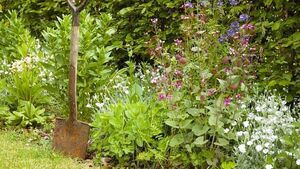Green Fingers: The longest day in the garden

The summer officially starts close to the longest day, which is the 21st of June.
The arrangement of the calendar is all a bit distorted, as we are never quite ready for the season ahead, especially as, at the end of the week, it is the longest day, and after that it will start heading into the winter.
I think the longest day should be around the end of July and that, I am sure, would be acceptable to everyone.
The summer officially starts close to the longest day, which is the 21st of June, after which it is all downhill to the shortest day before Christmas.
All this confusion arises because the start and middle of summer are man-made festivals established long ago for various reasons, which were probably relevant to those times.
For plants, however, day length is important as it triggers growth, flowering and fruits, and it is co-dependent on a certain amount of heat and moisture too.
For example, some vegetables unless planted at the correct time will just bolt as they have too much light and incorrect conditions at the wrong time in their cycle.
This is a busy time for those who like gardening and there is probably a list of what to do. At times it is easy to get distracted but still do worthwhile things.
Not that I wish to alarm anyone but unless you nail down your priorities the time can slip away and you miss the opportunity to grow some desirable plants, and then it is too late for this year.
This is a great time to see what is flowering and if something takes your fancy, get the plant or name or take a photo before you head off.
Most herbaceous perennials are in full growth now and, depending on variety, can be in flower from May until the autumn.
So visit gardens, shows and nurseries where you can see the plants in their real natural colour.
Perennials are great as they grow fast and most increase at the roots and, therefore, they can be divided and split apart in early spring into two or more pieces to help increase the number you have.
Very popular are Lupins (from seed), Echinacea, Rudbeckia, Salvia, Hosta and Anemone (all can be divided to increase your numbers).
Travelling around the country I see people working hard in their garden and quite often hours later on the return journey they are still there.
While it is satisfying it can be exhausting and, therefore, if a wet day comes, it is welcome for a number of reasons, including the opportunity to rest up for a while.
The nice thing is this busy period passes soon and growth slows down around the same time as you have the garden tamed, and then you can relax a little, and, when asked, you pretend it did not take much to look after the garden - not sure why we feel we have to tell a white lie.
When to prune or trim back plants continues to cause problems and I do not think it can be sorted out in these few short notes but a general rule of thumb is that you prune plants after they have flowered.
Therefore, on that basis, pruning can be carried out at any time of the year depending on the plant type but I think pruning must take place otherwise the plants will outgrow their space and, in some cases, become elongated and break in windy or wet conditions.
If you have any queries or comments you are welcome to share them with me on 051-384273 or orchardstowngardencentre@hotmail.com and if of general interest I will include it in a future article.






